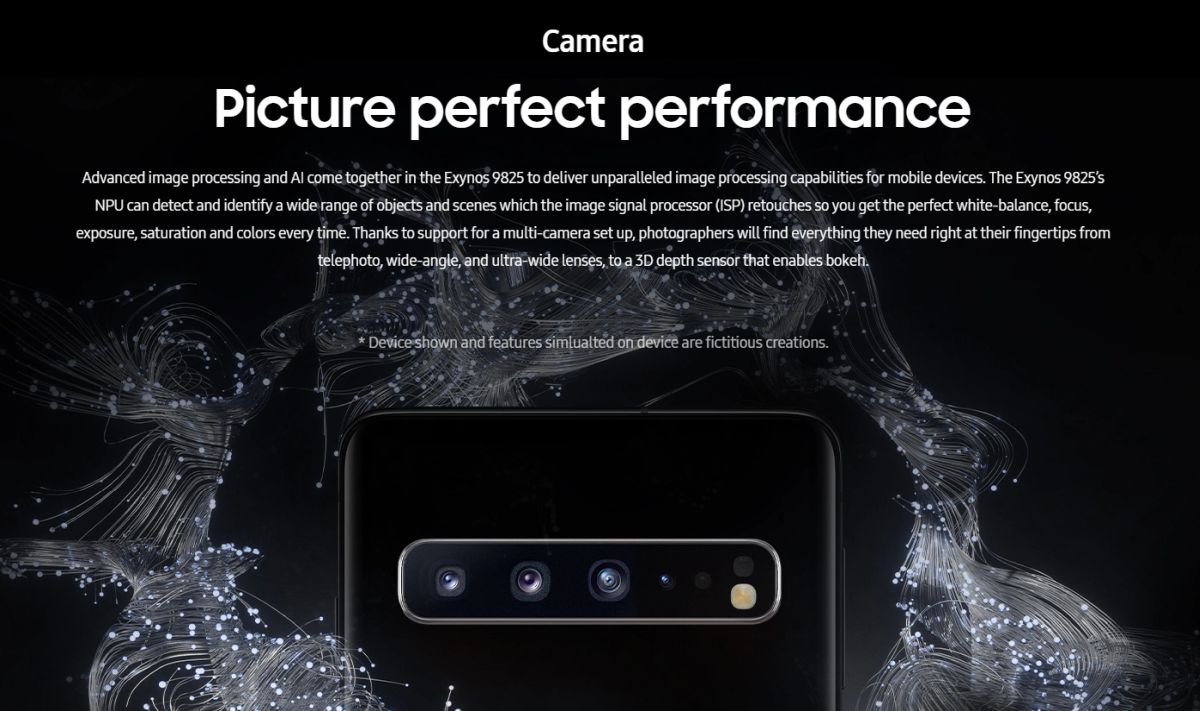As per earlier reports, the Exynos 9825 is based upon Samsung’s new 7nm process node, more specifically with the use of Extreme Ultraviolet Lithography (EUV) processing technology. Like its predecessor, the Exynos 9820, the chipset features an integrated Neural Processing Unit (NPU); a standard addition to most premium and high-end mobile chipset. In the case of Samsung, the NPU will aid the Exynos 9825 with AI processing and other tasks, such as object recognition, photo optimisation. Plus the usual fare of pattern recognition and shorter loading times.
Beside its 7nm die lithography, the Exynos 9825 is practically identical to Samsung’s earlier Exynos 9820 SoC that’s used in the Galaxy 10 series. It comprises an octa-core CPU, an ARM Mali-G76 MP12 GPU, and the previously mentioned NPU. The chipset’s CPU runs on a 2-2-4 configuration; that’s a dual-core custom Mongoose CPU, dual-core Cortex-A75, and quad-core Cortex-A55. Samsung is clearly driving the speed agenda in gaming, stating on the component’s official page that both the CPU and GPU within the Exynos 9825 SoC has been tweaked to run at higher faster clockspeeds. On a side note, the chipset still supports LPDDR4X memory and USF3.0 and UFS2.1 storage.
It’s the same story with the Exynos 9825’s camera configuration support. Officially, the chipset can support a 16MP + 16MP dual configuration or a single 22MP primary sensor for the main camera. Around the front, the chipset can support selfie camera resolutions as high as 22MP, and last but not least, it can record video at 8K resolution but at a limit of just 30 fps. Despite these minor changes, we won’t know just how much of an improvement the Exynos 9825 is until we properly test it. Until then, we’ll just have to settle with the Galaxy Note10’s official launch taking place early tomorrow morning. (Source: Samsung)

